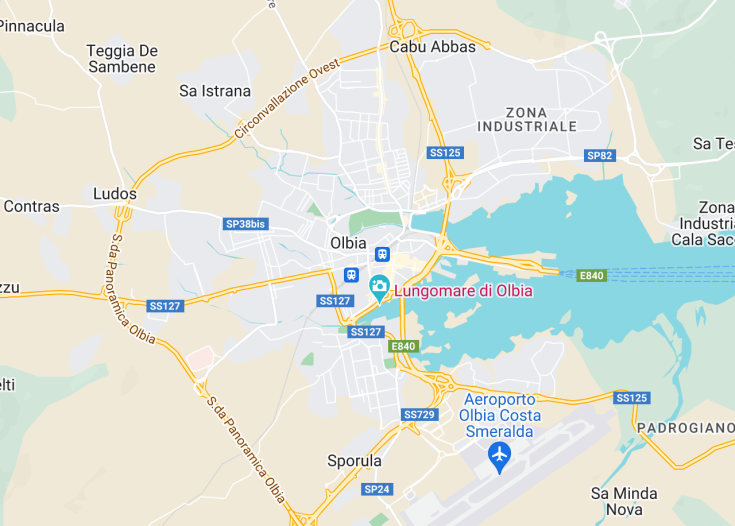Nestled on the northeast coast of Sardinia, Italy, Olbia is a captivating port city known for its rich history and stunning natural beauty. The city serves as a gateway to the glamorous Costa Smeralda, famed for its pristine white beaches and emerald waters. Olbia’s ancient roots are evident through remarkable archeological sites, including the Romanesque Basilica of San Simplicio and the sacred well of Sa Testa. Its vibrant culture, bustling markets, and delectable cuisine make Olbia a delightful destination for travelers seeking both relaxation and adventure.
Before exploring Olbia, consider visiting during late spring or early autumn to enjoy mild weather and smaller crowds, enhancing the overall experience.
For an authentic taste of local life, don’t miss the lively San Pantaleo market held every Thursday, where artisans and farmers showcase their products.
Top things to do & see in Olbia
Select the following sights and activities to discover best tickets and tours available in Olbia.
Olbia: Sardinia’s Hidden Gem
| Country | Italy |
| Time in Olbia | GMT+1 |
| Language spoken | Italian |
| Population | 60,261 (source: ISTAT) |
| Currency | Euro (€, EUR) |
| Airports | Olbia Costa Smeralda Airport (3.7 mi / 6 km). |
Olbia, a captivating city in northeastern Sardinia, offers a dynamic blend of modern life and rich history. Known for its picturesque seascapes and ancient ruins, Olbia is a prime destination for explorers and holiday-goers alike. The city’s gateway, Olbia Costa Smeralda Airport, conveniently connects travelers to an array of serene beaches and historical landscapes, including the mysterious Giants’ Graves and the sacred medieval Church of San Simplicio.
Olbia’s strategic location along the luxurious Costa Smeralda makes it a hotspot for yachting and luxury tourism, drawing visitors with its deluxe resorts and fine dining establishments. The city is not only about leisure; its archaeological museum showcases narratives of its complex past, from Roman naval hospitals to remnants of medieval ceramics.
The city thrives in a Mediterranean climate, offering balmy, dry summers and mild winters, perfect for year-round visits. Its streets buzz with cafes and boutiques, reflecting the vibrant local culture intertwined with commercial modernity. Olbia is a junction where culture, history, and modernism merge to deliver a unique, enriching experience. Not only does the city draw sun-seekers and history buffs, but its culinary scene also presents a delightful exploration of Sardinian gastronomy, featuring local wines and pecorino cheese.
Where is Olbia?
Located in the northeast of Sardinia, Olbia is a scenic port city along the sparkling Costa Smeralda.
Distances:
| Route | Distance by car | Time by car |
|---|---|---|
| Rome to Olbia | 230 miles | 5 hours 30 minutes |
| Milan to Olbia | 400 miles | 8 hours |
| Naples to Olbia | 360 miles | 7 hours 15 minutes |
What is Olbia famous for?
Olbia is renowned for its beautiful coastlines and significant archaeological sites. It’s a preferred gateway to the luxurious Costa Smeralda, famous for its crystal-clear waters and elite tourist services.
History
Prehistoric to Roman Times
Olbia, located in the northeast of Sardinia, Italy, has a rich history that dates back to the prehistoric era. Originally inhabited by the Nuragic civilization, renowned for their unique Bronze Age towers and settlements, the area played a significant role in the Mediterranean trade routes. The Phoenicians, recognizing its strategic importance, established a settlement here in the 8th century BCE, which was later expanded by the Carthaginians.
Medieval Period
After the fall of the Roman Empire, Olbia experienced several invasions but managed to maintain its importance through the Middle Ages. The city fell under the control of the Judicate of Gallura, one of the four independent Sardinian kingdoms of that time. Pisa and Genoa, powerful maritime republics, later influenced Olbia, leaving a lasting impact on its architecture and culture.
Modern Era
In the 19th century, Olbia became part of the Kingdom of Sardinia, which later unified to form the Kingdom of Italy. The city saw significant development in the 20th century, particularly after World War II, transforming into a vibrant urban center and a popular tourist destination. Today, Olbia is known for its beautiful landscapes, historical sites, and as a gateway to the famous Costa Smeralda.
Visit Olbia
What to see and do in Olbia, Italy
Olbia offers a blend of historical sites and stunning natural beauty, promising a fulfilling experience for all visitors. Start by exploring the ancient ruins, such as the Romanesque Basilica of San Simplicio, which dates back to the 11th century. For those interested in cultural history, the Archaeological Museum of Olbia provides insights into the city’s Roman and medieval past.
- Visit the picturesque Porto Istana Beach for a relaxing day in the sun.
- Explore the lively local markets to sample traditional Sardinian products.
- Take a boat tour from Olbia to the beautiful islands of the Maddalena Archipelago.
Festivals and Events in Olbia
Olbia hosts various annual events that reflect its rich culture and history. The San Simplicio Festival in May celebrates the city’s patron saint with a procession, traditional music, and feasting. The summer months are lively with the Olbia Film Festival, attracting cinema enthusiasts from all over.
Best time to visit Olbia
The ideal time to visit Olbia is from May to September when the weather is warm and sunny, perfect for beach outings and outdoor activities. This period also coincides with many local festivals, providing a deeper glimpse into the region’s traditions.
Is Olbia worth visiting?
Undoubtedly, Olbia is worth visiting. With its rich blend of history, culture, and natural beauty, the city offers a uniquely Sardinian experience. Whether you’re exploring its ancient ruins, enjoying its magnificent beaches, or participating in its vibrant festivals, Olbia provides an enriching experience that caters to a wide range of interests and preferences.









